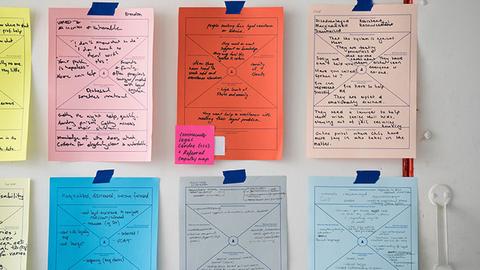What you need to create solid documentation of your IP video Surveillance system

What is surveillance network documentation This blog applies to both self-maintaining end-users and video surveillance integrators using any VMS. Documentation of your VMS installation can come in many forms but in general it is a collection of the most important aspects of your installation and a detailed reference for you and your team in the event of an expansion, maintenance or an emergency. Why is documentation important A video surveillance system is no longer a simple NVR or collection of NVRs with analog cameras terminating directly on the dedicated hardware. Today VMS installations are created by the careful integration of compute, storage, network, cameras, UPSs and each of these devices requires, at a minimum, an IP Address, username and password. That’s a lot of information to keep in your head so be sure to put it in Excel, in notepad, on a napkin, anything that you will keep safe. So aside from just jogging your memory why else is documentation important. Sharing with your team. You might not always be available to provide the needed information when it is needed Sharing inside your organization. Some organizations may have to abide by regulations or standards and good documentation will allow for those teams to audit the installation quickly. Maintenance. When you have a problem with a device and need to replace it with a new one. You will need to apply the existing parameters and positioning to the replacement in order for it to function. What information do you need in your documentation Compute (Server, Desktop, Appliance) Host name IP address of all nics Network What device is plugged into what port and patch panel and/or switch IP address of the switch Where the switch is located Cameras What recording server the camera is on Make/model Name of camera IP and MAC information Status (enabled, disabled) Credentials of the camera Point in time snapshot of the camera field of view Resolution Frame rate Once you have the information gathered you need a place to record it Excel The vast majority of administrators will use Excel for their video surveillance system documentation. It is ubiquitous, easy, portable and quickly edited. Google Drive Google drive is a great place for the VMS documentation as you keep all you files in one place, including sheets, pictures, configuration files etc. You can take all this with you on your mobile device and share with a teammate. Intranet or Wiki Intranet is an internal company website that allows you to add and update information about your VMS deployment. This is typically in the form of a wiki so it might be a bit more cumbersome to add text and data but you have all your info in one place and in the same format. The only challenge with a wiki is that it is hard to share with customers or vendors. Cloud services Cloud services have also become more and more popular for documentation. Here are some notable mentions IT Glue, Liongard and SI Portal. How Boring makes it easy All the methods above require a lot of manual data entry, especially on larger camera systems with hundreds of IP cameras. Imagine manually taking a screenshot of a 200, 300, 1000 camera system and then adding them to a word document. What about reviewing each camera’s video settings (frame rate and resolution), this would take hours. Here at Boring our mission is to save you time and so we try to remove those repetitive and tedious, but very critical, tasks from your job description and do them for you. Unfortunately we can not do it all (yet) but what we have done is automate the documentation of your Milestone system including all the important camera details like IP Address MAC Address, Video stream settings(FPS, resolution, CODEC, etc) Point in time Snapshots of the camera image Camera credentials (username and password) We estimate it would take an admin at least 90 seconds to fully document one camera so just multiply that by hundreds or thousands, and then think about the the mistakes that come along with that boredom and monotony. Finally consider that this report you spent tens of hours making is out of date the day after it is complete. Wouldn’t it make sense to automate a lot of this? Tools like the Boring Toolbox which have deep and powerful integrations with Milestone Systems XProtect can automate many of the aspects of the system reporting and save countless hours, headache and save you heaps of money. Free camera documentation template In order to help you get started click here for your Free Boring report template and if you want Boring to do it for you just give it a try here!

